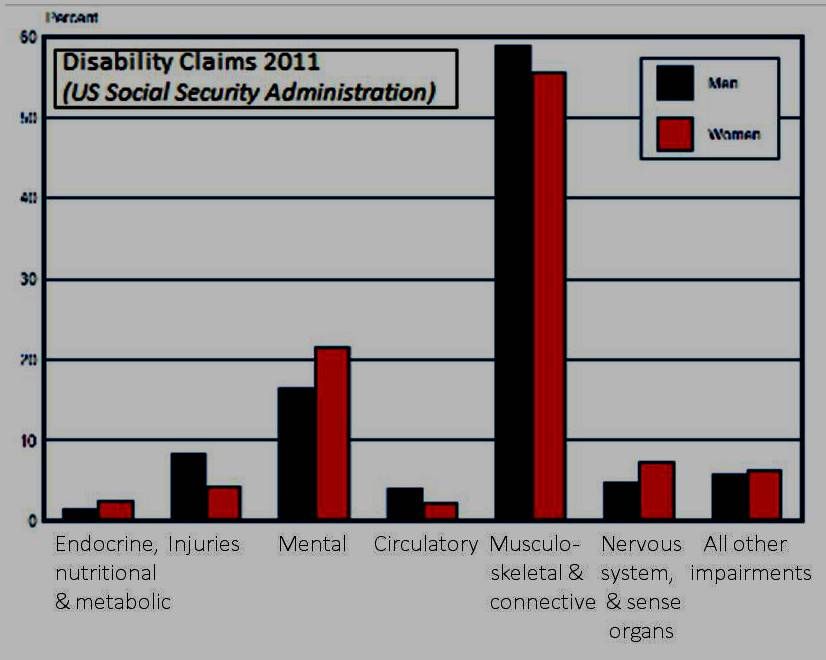Musculoskeletal Causes Now Top Disability Claims by a Large Margin
Musculoskeletal diagnoses including back pain now top the list of disability claims in the US, up from a mere 8% in 1961 to nearly 34% in 2011. Whether a musculoskeletal claim is filed and accepted, according to a National Public Radio report, may be more a socioeconomic than medical issue.
Musculoskeletal diagnoses including back pain now top the list of disability claims, reveals a report on National Public Radio called "Unfit for Work: The Startling Rise of Disability in America."
Up from a mere 8% in 1961, musculoskeletal diagnoses accounted for nearly 34% of all disability claims in 2011, more than three times the number for cardiovascular causes (10.6%) and far more than those for mental disorders and developmental disability (19.2%). Among workers who have filed for both disability and workers' compensation, the discrepancy is also pronounced (see graph below).

Portraying disability claims as a new form of welfare, the series points to the fact that two patients with similar levels of pain or physical dysfunction may claim disability benefits or not depending on whether they qualify for a desk job or for manual labor.
The broadcast mentions Dr. Perry Timberlake, an Alabama general practitioner, who always asks patients requesting a disability claim about their level of education. "If you have a particular back problem and a college degree, you're not disabled," says the narrative. "Without the degree, you are."
Disabled beneficiaries aged 18–64 in current-payment status account for over 4.6% of the US population in that age range; by far the largest proportion of them are in the age range 60-64, according to Social Security Administration annual disability figures for 2011. Overall the vast majority (88%) were disabled workers rather than their widow/ers or children. Curiously, however, as a proportion of the total outlay for disability benefits, in the category of musculoskeletal diagnoses beneficiaries who were widows and widowers (33% of the total) slightly outstripped those who were disabled workers (29%).
The states with the highest rates of disabled beneficiaries-7% or more-were Alabama, Arkansas, Kentucky, Maine, Mississippi, and West Virginia. States contributing the largest percentages of disability benefits to musculoskeletal causes were Alabama (31.8%), Arkansas (31.6%), New York (31.3%), Louisiana (30.8%), and Delaware (30%).